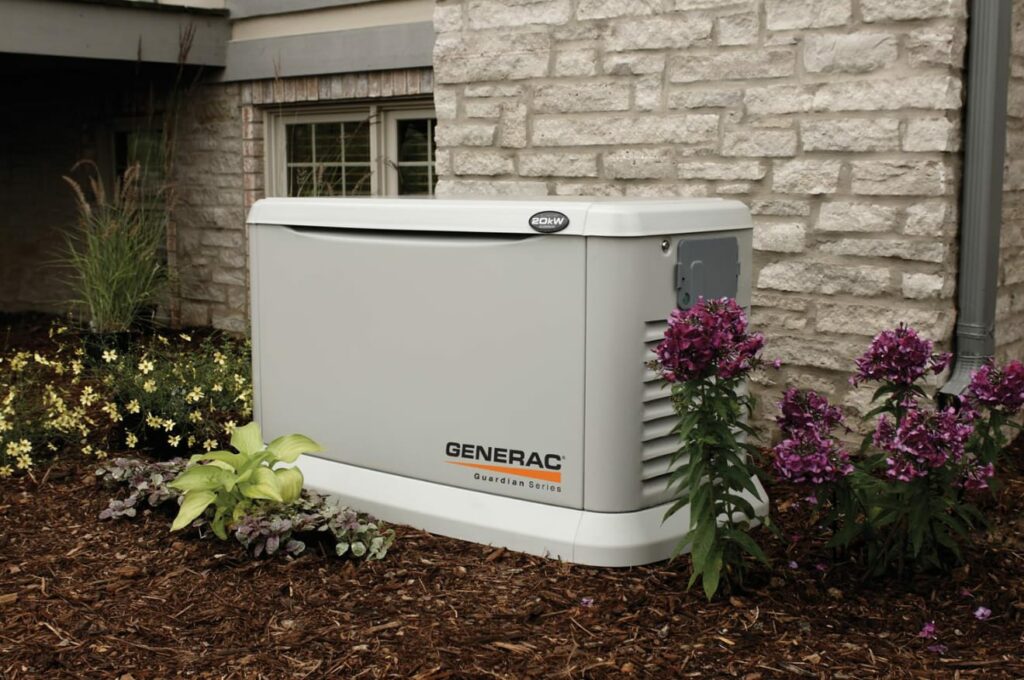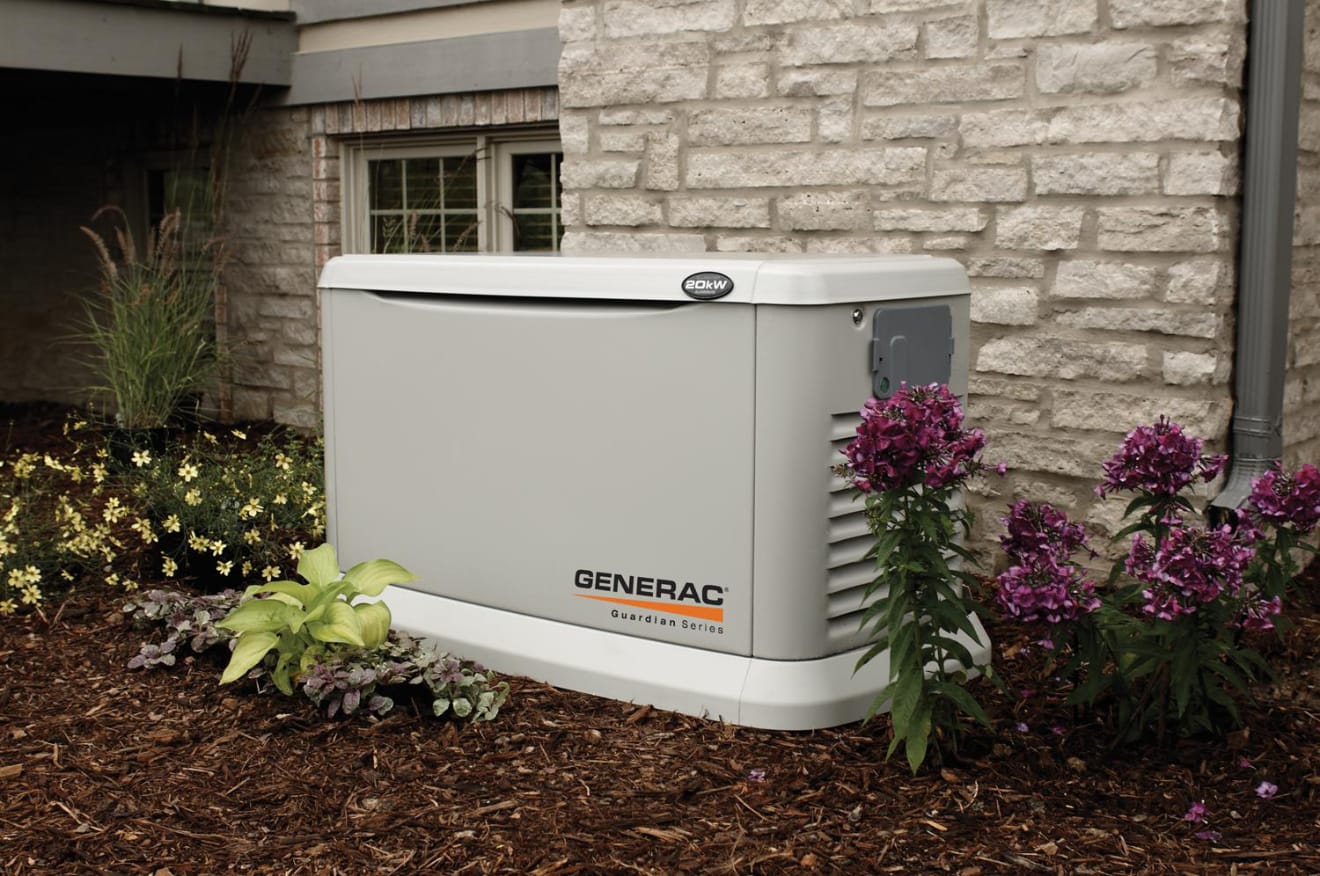In the heart of Austin, where the weather can be as unpredictable as the music scene is diverse, having a reliable backup generator is more than a convenience; it’s a necessity. From sudden thunderstorms that can knock out power lines to the occasional ice storm that grips the city, Austin homeowners understand the importance of being prepared for power outages.

This comprehensive guide, brought to you by Abacus Plumbing, Air Conditioning, and Electrical, aims to demystify the process, ensuring you select a generator that perfectly matches your home’s energy needs. Whether you’re looking to keep your lights on and your refrigerator running or ensure that your air conditioning is operational during those sweltering summer months, we’ll walk you through every step of the decision-making process. Let’s dive into the world of generators and find out how to keep your home powered through whatever the Austin weather throws your way.
Understanding Generator Size and Power Output
Understanding the concept of “generator size” is key when selecting a backup generator for your home. A generator’s size doesn’t refer to its physical dimensions but rather its electrical output, measured in kilowatts (kW). This figure represents the power the generator can supply to your home during an outage. The choice between different generator sizes and types, such as portable and standby generators, largely depends on the power output you need to support your home’s essential functions.
What Does Generator Size Mean?
The power output of a generator, its size in kilowatts, is directly linked to the number and type of appliances and systems it can run simultaneously. Generators can range from small, portable models producing around 1-2 kW, suitable for powering a limited number of small appliances, to larger standby models that can supply 20 kW or more, capable of powering an entire home.
- Portable Generators: These are generally smaller and can be moved easily. They’re perfect for temporary power needs, like running a few essentials – refrigerators, fans, or small air conditioning units. Their output usually ranges from 1 kW to 10 kW.
- Standby Generators: Typically installed permanently near your home, standby generators are designed to turn on when the power goes out automatically. They can generate a much larger power output (typically 10 kW to 20 kW or more), enough to smoothly operate an entire household.
Understanding the correlation between a generator’s size and power output is crucial in choosing a model that aligns with your needs without overestimating or underestimating your power requirements.
Assessing Your Power Needs
To accurately calculate your power needs during an outage, you’ll need to list the essential appliances and systems you absolutely cannot do without. These might include:
- Refrigerator and freezer: to keep food fresh.
- HVAC system: This is particularly crucial in Austin’s climate for temperature control.
- Lighting: a few essential lights.
- Medical equipment: if you require powered medical devices.
- Sump pump: if applicable, to prevent flooding.
Each appliance’s power requirement is usually listed in its manual or on a label on the device itself. These requirements are given in watts (W), and the total power needed can be calculated by adding up the wattage of all essential appliances. For example, if your refrigerator needs 800W, your sump pump 600W, and your lights 400W, you would need at least 1800W (or 1.8kW) of power from your generator.
By understanding generator sizes and accurately assessing your power needs, you’ll be well on your way to choosing a backup generator that ensures your home remains comfortable and functional during any power outage. This careful planning will help you avoid the inconvenience and potential hazards of losing power and ensure that your essential appliances and systems keep running smoothly, no matter the weather outside.
How to Calculate Your Home’s Energy Requirements
Preparing for power outages requires a clear understanding of your home’s energy needs. This section will guide you through the process of listing essential appliances and systems, calculating their total wattage, and understanding the difference between peak and running wattage. This information is crucial for selecting a generator that can efficiently handle your power requirements during an outage.
Listing Essential Appliances and Systems
Start by identifying which appliances and systems you must keep running during a power outage. Prioritize those that are critical for your safety, health, and comfort. Here’s a method to organize your list:
- Safety and Security: Items like smoke detectors, security systems, and exterior lights.
- Refrigeration and Cooking: The refrigerator and freezer are essential for preserving food. If cooking is a priority, include a microwave or stove.
- Heating and Cooling: Depending on the season, your HVAC system, fans, or heaters may be crucial.
- Water and Sanitation: The pump is vital if you have a well. Also, consider sump pumps if flooding is a concern.
- Communication and Information: Don’t forget chargers for phones and laptops to stay informed and in touch.
- Medical Needs: Include any medical devices that require electricity.
Once you’ve listed these items, you’re ready to calculate their total power requirements.
Calculating Total Wattage
To find out how much power your essentials need, follow these steps:
- Gather Information: Look for a label on each appliance that lists its wattage. If wattage isn’t directly provided, you may find amperage (amps) and voltage (volts); multiply them to get watts (Watts = Amps × Volts).
- Write Down Wattage: Note the running wattage of each appliance. This is the continuous power required to operate the item.
- Add Them Up: Take the sum of all listed appliances’ running wattages. This total gives you the minimum output your generator should have to meet your needs during an outage.
Consideration for Peak vs. Running Wattage
Understanding the distinction between peak (or starting) wattage and running (or rated) wattage is essential:
- Running Wattage: This is the constant power level required to keep an appliance operating.
- Peak Wattage: Many appliances need a higher burst of power at startup, especially those with motors (like refrigerators, AC units, and sump pumps). This peak wattage can be significantly higher than the running wattage but is temporary.
When selecting a generator, ensure it can handle the highest peak wattage you’ll need, plus the cumulative running wattage of other appliances you plan to use simultaneously. Suppose your refrigerator needs 2,000 watts to start and only 700 watts to run, but you’re also running lights and a fan requiring 300 watts. In that case, your generator should handle at least 2,300 watts at startup and 1,000 watts continuously.
By carefully listing your essential appliances, calculating their total and peak wattage requirements, and considering both types of wattage in your generator selection, you can ensure that your chosen generator will adequately support your home during power outages, keeping your household safe, comfortable, and functional.
Other Factors to Consider When Choosing a Generator
Selecting the right generator for your home is critical beyond just calculating your current energy needs. Several other factors play a crucial role in ensuring you make a choice that meets your needs today and is a sound investment for the future. Consider these essential other factors to guide your selection process:
Future Needs
As you assess your home’s energy requirements, it’s wise to consider not just your current needs, but also potential future changes. Your energy demand could increase due to several factors, such as:
- Home Additions: Planning any future expansions or additions to your home could significantly increase your power requirements.
- New Appliances: High-power devices like electric vehicles, hot tubs, or significant upgrades to your HVAC system could necessitate a more powerful generator.
- Family Growth: An increase in the number of household members might lead to higher electricity consumption.
Incorporating a margin for future needs ensures that your generator will remain adequate, avoiding the need for an early upgrade.
Fuel Type and Availability
Generators can run on various fuel types, each with its advantages and considerations, especially in Austin:
- Gasoline: Gas is readily available, but it can be inconvenient during widespread outages or disasters due to potential supply issues. Gasoline also has a shorter shelf life and requires careful storage.
- Diesel: Offers high energy efficiency and is generally reliable. However, it might be less readily available during power outages and requires strict adherence to storage regulations.
- Natural Gas: Provides a continuous supply since it’s piped directly into many homes, eliminating the need for refueling. However, it may not be available in all areas, and installation can be more complex and costly.
- Propane: Stores longer than gasoline or diesel and burns cleaner. It requires a storage tank and, like natural gas, can be more expensive initially but is a reliable fuel source.
Consider the availability of these fuel types in Austin, storage requirements, and their potential impact on your choice of generator.
Noise Levels
Noise is an important consideration, especially in residential areas. Generators can be loud, and their operation may disturb your family or neighbors, particularly at night. Standby generators are generally quieter than portable models, but noise levels vary significantly across types and brands. Look for models with low decibel ratings and consider installing sound-dampening enclosures to minimize disruption.
Budget and Cost
Your budget plays a pivotal role in the generator selection process. Consider these cost factors:
- Purchase Price: The price varies widely depending on generator type, size, and features. While portable generators are generally less expensive, standby models offer greater convenience and power but at a higher initial cost.
- Maintenance Costs: Regular maintenance is crucial for generator reliability and longevity. Standby generators often have higher maintenance requirements and costs than portable models.
- Fuel Consumption: Operational costs can vary based on the generator size, efficiency, and the type of fuel used. Consider fuel costs in your ongoing budget, especially if you anticipate regular use.
By carefully considering these factors – future needs, fuel type and availability, noise levels, and budget—you can decide which generator size and type are best suited for your home in Austin. This foresight will ensure that your investment provides reliable power, convenience, and peace of mind during outages while also accommodating your household’s evolving needs.
Why Choose Abacus Plumbing, Air Conditioning, and Electrical
Abacus Plumbing, Air Conditioning, and Electrical is the premier choice for homeowners due to its unmatched expertise, deep local knowledge, and comprehensive range of services. Here’s why Abacus is the go-to provider for your generator needs:
Expertise and Experience
Abacus brings a wealth of expertise and experience to the table. With years of industry service, our team is adept at advising on and installing the perfect generator size for any Austin home. Whether you’re navigating the complex world of power requirements, fuel types, or noise regulations, our professionals are equipped with the knowledge to seamlessly guide you through the selection process. Our expertise ensures that your installation is handled professionally, adhering to the highest safety and efficiency standards.
Local Knowledge
Understanding the unique needs and challenges of Austin residents is where Abacus truly excels. Our team is not just familiar with the general requirements for backup power solutions; we’re deeply entrenched in the local community and aware of the specific weather patterns, power outage frequencies, and local regulations that impact generator use in the area. This local insight enables us to recommend solutions that are effective and perfectly tailored to Austin’s climate and conditions.
Comprehensive Service
Abacus offers a full spectrum of services to ensure your generator needs are fully covered, from initial consultation to ongoing maintenance and repair. Our services include:
- Selection Guidance: Helping you choose the right generator based on your home’s size, energy requirements, and budget.
- Professional Installation: Ensuring your generator is installed safely and efficiently, with minimal disruption to your home.
- Routine Maintenance: Providing ongoing maintenance services to keep your generator in top condition, ensuring reliability when you need it most.
- Repair Services: Offering quick and efficient repair services to address issues, minimizing downtime and inconvenience.
Choosing Abacus means opting for a partner who will be with you every step of the way, from selecting and installing your generator to ensuring its long-term reliability and efficiency. Our commitment to quality and comprehensive service offerings make us the ideal choice for Austin homeowners seeking peace of mind during power outages.
With Abacus Plumbing, Air Conditioning, and Electrical, you’re choosing more than just a service provider; you’re choosing a partner dedicated to ensuring your home remains powered, comfortable, and safe, no matter what challenges the Austin weather presents. contact us today at 512-400-0749 to schedule a free estimate today!

